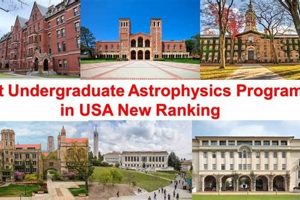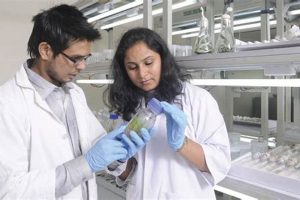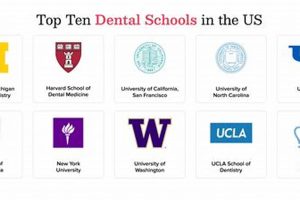High-achieving NCAA Division II institutions prioritize rigorous academics alongside competitive athletics. These colleges and universities offer a diverse range of challenging programs, often with smaller class sizes and close faculty interaction, fostering a supportive learning environment. For example, some institutions excel in pre-professional programs like pre-med or engineering, while others boast strong liberal arts curricula. Student-athletes at these schools often benefit from dedicated academic support services tailored to their unique demands.
Choosing a strong academic institution within Division II athletics can provide significant long-term advantages. A rigorous academic foundation prepares student-athletes for diverse career paths, whether or not they pursue professional sports. Historically, the emphasis on balanced student-athlete development within Division II reflects the evolving understanding of the importance of education in collegiate athletics. This commitment to academic excellence has created a pathway for many students to achieve both athletic and professional success. The focus on holistic development cultivates well-rounded individuals prepared to contribute meaningfully to society.
This article will further explore factors to consider when evaluating academic excellence within Division II, including faculty qualifications, research opportunities, graduation rates, and post-graduate outcomes. Additionally, the article will delve into specific examples of institutions renowned for their strong academic programs and commitment to student-athlete success.
Tips for Selecting Academically Strong Division II Institutions
Choosing a college or university requires careful consideration of several factors. For student-athletes targeting Division II schools, academic rigor should be a primary concern. The following tips offer guidance for navigating the selection process.
Tip 1: Look beyond athletic rankings. While athletic prowess is important, prioritizing institutions with strong academic reputations ensures a well-rounded education and preparation for life beyond sports.
Tip 2: Investigate faculty qualifications. Faculty expertise directly impacts the quality of education. Research faculty credentials, publications, and involvement in their respective fields.
Tip 3: Consider class size and student-to-faculty ratio. Smaller classes often provide more individualized attention and opportunities for interaction with professors.
Tip 4: Explore available academic support services. Dedicated academic advisors, tutoring programs, and study resources specifically designed for student-athletes can contribute significantly to academic success.
Tip 5: Research graduation rates and post-graduate outcomes. These metrics offer insights into the institution’s commitment to student success and the potential for future career opportunities.
Tip 6: Examine available research opportunities. Involvement in undergraduate research provides valuable hands-on experience and fosters critical thinking skills.
Tip 7: Visit campuses and attend classes. Experiencing the campus environment firsthand provides valuable insights into the academic atmosphere and student life.
By carefully evaluating these factors, prospective students can identify Division II institutions that offer both a competitive athletic experience and a strong academic foundation, setting the stage for long-term success.
These tips provide a starting point for navigating the college selection process. Further research and careful consideration of individual needs and aspirations will lead to the best possible fit.
1. Rigorous Curricula
A rigorous curriculum is a cornerstone of academically distinguished Division II institutions. Challenging coursework, high academic standards, and a focus on critical thinking contribute significantly to a demanding yet rewarding learning experience. This emphasis on academic depth prepares student-athletes for the complexities of professional careers and fosters lifelong learning. Institutions recognized for strong academics often feature specialized programs, advanced research opportunities, and a commitment to intellectual exploration. The connection between a challenging curriculum and overall academic excellence is undeniable. For example, schools with strong pre-med programs often incorporate extensive laboratory experience and research opportunities, exceeding basic requirements and better preparing students for medical school.
The benefits of a rigorous curriculum extend beyond immediate career prospects. Students develop critical thinking skills, problem-solving abilities, and a capacity for rigorous analysisattributes valued across various professions. Furthermore, a demanding academic environment often fosters a culture of achievement and encourages students to strive for excellence in all pursuits. This translates to success in postgraduate studies, professional endeavors, and lifelong learning. For instance, demanding coursework in engineering programs at academically strong Division II institutions builds a foundational understanding necessary for success in graduate studies or demanding engineering roles.
In summary, rigorous curricula serve as a defining characteristic of top Division II academic institutions. The challenging coursework, high expectations, and emphasis on critical thinking contribute significantly to student success both during and after college. By fostering a culture of achievement and preparing students for the complexities of future careers, these institutions equip graduates with the skills and knowledge necessary to thrive in a competitive world. This dedication to academic excellence distinguishes these schools and reinforces their commitment to developing well-rounded individuals prepared for lifelong success. Institutions that prioritize curricular rigor establish a foundation for student success and contribute to a richer, more fulfilling educational experience.
2. Faculty Expertise
Faculty expertise serves as a critical component of academically distinguished Division II institutions. Distinguished faculty members, often leaders in their respective fields, contribute significantly to the quality of education. Their advanced knowledge, research contributions, and real-world experience enrich the learning environment, providing students with valuable insights and mentorship. This direct connection between faculty expertise and academic excellence establishes a foundation for student success. For example, institutions with renowned faculty in fields like business or computer science often attract high-achieving students seeking to learn from leading experts. The presence of experienced and accomplished professors enhances the institution’s reputation and attracts talented students, creating a cycle of academic excellence. Furthermore, faculty engagement in cutting-edge research provides opportunities for undergraduate involvement, fostering critical thinking and hands-on experience.
The practical significance of experienced faculty extends beyond the classroom. Mentorship opportunities, research collaborations, and professional networking connections provided by expert faculty contribute significantly to student development. These interactions expose students to real-world applications of their studies and prepare them for future careers. For instance, faculty with industry connections can facilitate internships and job opportunities, providing a direct pathway to professional success. Moreover, faculty mentorship can guide students in their academic pursuits, helping them navigate challenges and make informed decisions about their future. The depth and breadth of faculty knowledge create a rich learning environment, fostering intellectual curiosity and a commitment to lifelong learning.
In summary, faculty expertise represents a crucial factor in distinguishing top Division II academic institutions. Experienced and accomplished faculty members enrich the learning experience, contribute to research advancements, and provide valuable mentorship opportunities. The presence of distinguished faculty enhances the institution’s reputation, attracts talented students, and fosters a culture of academic excellence. This commitment to recruiting and retaining high-quality faculty directly correlates with student success and contributes to the overall strength and reputation of the institution. This focus on faculty expertise signifies a dedication to providing students with the best possible education and preparing them for successful futures.
3. Small Class Sizes
Small class sizes represent a significant factor in the academic excellence of many top Division II institutions. This pedagogical approach fosters a more intimate and interactive learning environment, contributing directly to student success. The following facets explore the connection between smaller class sizes and the overall academic quality found in leading Division II schools.
- Increased Student-Faculty Interaction
Smaller classes facilitate more frequent and meaningful interactions between students and professors. This increased access to faculty expertise allows for more personalized instruction, tailored feedback, and greater mentorship opportunities. For example, in a small class setting, professors can address individual student questions in greater depth and provide customized guidance on research projects. This personalized attention can significantly enhance student understanding and foster deeper learning.
- Enhanced Collaboration and Engagement
Smaller classes cultivate a more collaborative learning environment. Students have greater opportunities to engage in discussions, work on group projects, and learn from their peers. This collaborative atmosphere can lead to a deeper understanding of the material and the development of valuable teamwork skills. For instance, small group discussions can encourage critical thinking and allow students to explore different perspectives on complex topics.
- Improved Student Performance and Retention
Studies have shown a correlation between smaller class sizes and improved student performance and retention rates. The increased individual attention and personalized feedback provided in smaller classes can help students stay on track academically and achieve their full potential. Improved retention rates also contribute to a stronger sense of community and a more supportive learning environment.
- Greater Accessibility to Resources and Support
In smaller class settings, students often have greater access to academic resources and support services. This includes more individualized attention from academic advisors, easier access to tutoring programs, and more opportunities to engage in research with faculty. This enhanced access to resources can significantly benefit student-athletes who often require flexible scheduling and personalized support to balance their academic and athletic commitments.
In conclusion, small class sizes contribute significantly to the academic quality of leading Division II institutions. By fostering increased student-faculty interaction, enhanced collaboration, improved student performance, and greater access to resources, smaller classes create a learning environment conducive to student success. This focus on personalized instruction and individualized support distinguishes many top Division II schools and reinforces their commitment to providing a high-quality academic experience.
4. Dedicated Support Services
Dedicated support services play a crucial role in distinguishing academically successful NCAA Division II institutions. These services directly address the unique challenges faced by student-athletes balancing demanding academic schedules with rigorous athletic training and competition. A comprehensive support system contributes significantly to academic performance, graduation rates, and overall student well-being. This connection between dedicated support and academic success establishes a key characteristic of top Division II schools. For example, institutions offering specialized academic advising for student-athletes, tailored tutoring programs, and priority registration often witness higher academic achievement and graduation rates among their student-athlete population. These resources recognize the specific time constraints and pressures faced by student-athletes, providing targeted assistance to help them thrive academically. The availability of such services demonstrates a commitment to holistic student development and reinforces the institution’s dedication to academic excellence.
The practical significance of dedicated support services extends beyond immediate academic outcomes. Access to mental health resources, career counseling, and time management workshops contributes to the overall well-being and future success of student-athletes. For instance, institutions providing access to sports psychologists recognize the mental and emotional demands of competitive athletics and offer support for navigating these challenges. Similarly, career services tailored to the specific needs of student-athletes can help them explore career options beyond athletics and prepare for life after college. By addressing both the academic and personal needs of student-athletes, these institutions create a supportive environment conducive to their overall growth and development. This comprehensive approach to student support differentiates high-achieving Division II institutions and contributes to their reputation for academic excellence. The presence of robust support services indicates a commitment to fostering a balanced and successful student-athlete experience.
In summary, dedicated support services serve as a critical component of academically successful Division II institutions. By providing tailored resources and addressing the unique needs of student-athletes, these institutions create an environment conducive to academic achievement, personal growth, and overall well-being. The availability of comprehensive support services, including academic advising, tutoring, mental health resources, and career counseling, demonstrates a commitment to holistic student development. This commitment distinguishes top Division II schools and reinforces their dedication to fostering a balanced and successful student-athlete experience. Institutions prioritizing these services not only enhance academic outcomes but also equip student-athletes with the skills and resources necessary to thrive in all aspects of their lives, both during and after college.
5. High Graduation Rates
High graduation rates serve as a key indicator of academic quality within NCAA Division II institutions. These rates reflect an institution’s commitment to student success and often correlate with several factors contributing to a positive learning environment. Strong academic support programs, rigorous curricula, and engaged faculty contribute to student persistence and ultimately, successful degree completion. A high graduation rate signifies that the institution effectively supports students in achieving their academic goals, preparing them for future careers and postgraduate opportunities. For example, institutions like Grand Valley State University and the University of Indianapolis consistently demonstrate high graduation rates, reflecting their dedication to student success both athletically and academically. These institutions often feature comprehensive support services, including academic advising, tutoring, and career counseling, which contribute significantly to student retention and graduation. Understanding the significance of graduation rates offers valuable insights into the overall academic strength and effectiveness of a Division II institution.
The practical implications of high graduation rates extend beyond institutional prestige. These rates often translate into improved career outcomes for graduates. Employers often view graduation rates as an indicator of an institution’s academic rigor and the quality of its graduates. Furthermore, higher graduation rates can contribute to increased alumni engagement and stronger alumni networks, benefiting both current and future students. For prospective student-athletes, high graduation rates suggest a supportive academic environment conducive to balancing athletic and academic pursuits. This fosters a culture of achievement and encourages students to prioritize their education alongside their athletic commitments. The focus on graduation as a key metric encourages institutions to invest in resources and support services that benefit students throughout their academic journey. This focus ultimately strengthens the overall academic reputation of Division II athletics.
In summary, high graduation rates represent a critical factor in evaluating the academic quality of Division II institutions. These rates reflect the effectiveness of academic programs, support services, and faculty engagement in fostering student success. The connection between high graduation rates and positive career outcomes underscores the practical significance of this metric for both institutions and students. By prioritizing graduation as a key indicator of academic excellence, Division II schools demonstrate a commitment to providing a high-quality education and preparing student-athletes for successful futures. This emphasis on degree completion reinforces the importance of a balanced student-athlete experience and contributes to the overall strength and reputation of Division II athletics.
6. Strong Career Outcomes
Strong career outcomes represent a significant factor in defining the best Division II schools academically. A consistent record of successful career placement among graduates demonstrates the effectiveness of an institution’s academic programs in preparing students for the professional world. This connection between academic preparation and career success underscores the importance of strong career outcomes as a key component of academic excellence. Factors such as internship opportunities, career services, and alumni networks contribute significantly to positive career outcomes. For example, institutions with established partnerships with industry leaders often provide students with valuable internship experiences that translate into job offers after graduation. Furthermore, comprehensive career services, including resume workshops, mock interviews, and networking events, equip students with the skills and resources necessary to navigate the job market effectively. Data on job placement rates, average starting salaries, and graduate school acceptance rates offer valuable insights into the effectiveness of an institution’s career preparation efforts.
The practical significance of strong career outcomes extends beyond individual student success. High job placement rates and successful alumni careers enhance an institution’s reputation and attract prospective students. Employers often target graduates from institutions known for producing well-prepared and successful professionals. Moreover, strong career outcomes can lead to increased alumni giving and stronger alumni networks, benefiting both current and future students. Institutions prioritizing career development initiatives demonstrate a commitment to preparing students for fulfilling and successful careers, reinforcing their dedication to academic excellence. Analysis of career outcomes data, including industry placement and career progression, offers a valuable perspective on the long-term impact of an institution’s academic programs. For instance, tracking the career paths of alumni in fields like healthcare or engineering can demonstrate the effectiveness of specific academic programs in preparing students for successful careers in those industries.
In summary, strong career outcomes serve as a crucial indicator of academic quality within Division II institutions. A consistent record of successful career placement reflects the effectiveness of academic programs, career services, and alumni networks in preparing students for the professional world. This connection between academic preparation and career success underscores the importance of strong career outcomes as a defining characteristic of the best Division II schools academically. Institutions prioritizing career development initiatives demonstrate a commitment to providing students with the skills, resources, and connections necessary to thrive in their chosen careers. The long-term success of graduates reinforces the value of a rigorous academic foundation and contributes to the overall reputation and strength of the institution.
Frequently Asked Questions
This section addresses common inquiries regarding academically strong Division II institutions.
Question 1: What distinguishes Division II from Division I academically?
While both divisions offer diverse academic programs, Division II institutions often emphasize a balanced approach to student-athlete development, prioritizing academics alongside athletics. Division II schools frequently feature smaller class sizes, fostering closer student-faculty interaction and personalized instruction.
Question 2: How can one identify academically strong Division II schools?
Several factors indicate academic strength, including faculty qualifications, graduation rates, research opportunities, and career outcomes. Examining these metrics offers valuable insights into an institution’s commitment to academic excellence.
Question 3: Are athletic scholarships available at academically strong Division II institutions?
Yes, athletic scholarships are available at Division II institutions. However, academic merit scholarships may also be available, providing additional financial aid opportunities for student-athletes.
Question 4: What types of academic support services are typically offered at these institutions?
Academic support services often include dedicated academic advisors, tutoring programs, study skills workshops, and time management resources specifically designed for student-athletes.
Question 5: Do academically strong Division II schools offer opportunities for undergraduate research?
Many academically strong Division II institutions prioritize undergraduate research opportunities, allowing students to gain valuable hands-on experience and contribute to scholarly advancements in their chosen fields.
Question 6: How can prospective student-athletes find the best academic fit within Division II?
Researching institutions, visiting campuses, attending classes, and meeting with faculty and current students provide valuable insights into the academic environment and overall fit. Considering individual academic interests and career aspirations is crucial in making an informed decision.
Careful consideration of these frequently asked questions helps prospective student-athletes navigate the college selection process and identify Division II institutions aligned with their academic and athletic goals. A well-informed decision ensures the best possible fit for a successful and fulfilling collegiate experience.
This concludes the frequently asked questions section. The following section will offer a concluding perspective on the importance of academic excellence in Division II athletics.
Conclusion
High academic standards within NCAA Division II athletics provide student-athletes with a foundation for lifelong success. This article explored key elements contributing to a strong academic environment, including rigorous curricula, experienced faculty, small class sizes, dedicated support services, high graduation rates, and strong career outcomes. These factors collectively contribute to a well-rounded educational experience, preparing student-athletes for successful careers and meaningful contributions to society, regardless of athletic pursuits.
Institutions prioritizing academic excellence within Division II athletics cultivate an environment where student-athletes can thrive both on and off the field. This commitment benefits not only individual students but also elevates the overall reputation and integrity of collegiate athletics. The pursuit of academic achievement alongside athletic competition fosters well-rounded individuals equipped to navigate the complexities of the 21st-century workforce and make a positive impact on the world. Continued emphasis on academic rigor within Division II athletics will further enhance the value and significance of the student-athlete experience.







